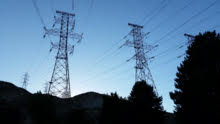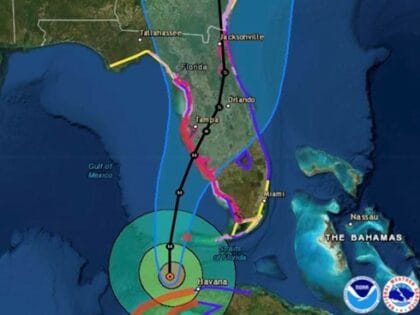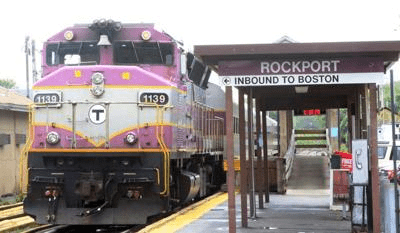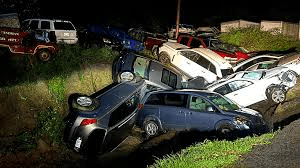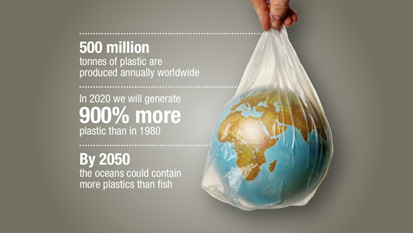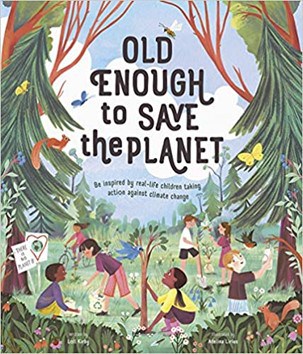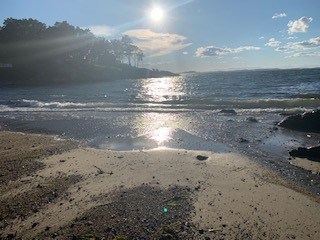Climate Action Bulletins
Issue #35 – January 5, 2023
Resolve to Shrink your Carbon Footprint
What is the best way to fight climate change? Which lifestyle changes can make a real impact? An opinion piece in The New York Times asked this question, and offered a quiz to help readers measure their knowledge.
The answers are somewhat surprising. Research shows that we often focus on— and take comfort in— changing habits that have minimal impact.
The four most impactful changes we can make are avoiding airline flight, eating a vegan diet, living car free, and using renewable energy.
Eating an organic, vegetarian diet and installing heat pumps are a good start, but only moderately effective.
We need to do everything we can to mitigate the climate crisis, but simply buying fewer things, lowering the room temperature, using energy efficient appliances, carpooling and recycling are of lesser impact.
Further, the author, Sander van der Linden, a professor of psychology at University of Cambridge points out that the public perception about the efficacy of recycling was the result of a misinformation campaign by plastic manufacturers, who promoted recycling, though most of the plastics cannot be re-used, and have overrun our landfills and oceans.
Similarly, there seems to be a misperception that electric cars are pricey. In actuality, they can be cheaper to own, and tax credit incentives reduce their cost further.
Most importantly, as citizens it is essential that we hold businesses and our government accountable, dispel myths about what actions are and are not effective, and commit to changing our lifestyle— curtailing air travel, purchasing clean energy and eating a plant based diet.
Here is the full list the best ways to reduce emissions, ordered by effectiveness:

Here is the link to the original article for those of you with access to the NY Times.
Issue #34 – December 23, 2022
The UUSR Solar Team, a subset of the Climate Action Group, has offered two presentations to the congregation to update members on the effort to install solar panels on the southwesterly roof of the building (Hale Street side). A zoom presentation was held on Tuesday, December 7th, and an in-person and zoom presentation was held after the service on Sunday, December 18th. Approximately 40 members have seen the presentation, and the feedback has been very positive.
The following describe actions that have occurred to date, as well as upcoming tasks and milestones.
- The team has met with four solar providers and received proposals from all four. We anticipate choosing a provider in January.
- With input from the solar providers, the Solar Team has learned that our roof is “prime solar real estate” and can generate enough power to cover 150% of our current electric needs.
- The proposals make great sense from a financial perspective, especially with the 30% credit offered by the federal government and dramatically rising rates from National Grid.
- The project has received approval from the UUSR Board.
- The Solar Team has prepared a draft application and presentation to the Rockport Historic Commission. We anticipate submitting the application early in 2023, after choosing a provider.
- Fundraising activities including a benefit concert and an appeal for individual contributions will begin once the project is approved by the Historic Commission.
To learn more or provide feedback, please reach out to Solar Team members Jerry Sharfstein, Carol Chirico or Jenny Amory.
Issue #33 – December 9, 2022
Energy Tips From The Climate Action Group
The Climate Action Group is pleased to provide you with some very useful websites dealing with:
– Alternate Electricity Suppliers.
– Rebates on Energy Efficient Appliances, Heating and Heat Pump Systems.
– Heat Pumps
Alternate Electricity Suppliers:
National Grid provides the infrastructure to bring electricity to your home (power lines, transformers, etc.) It is shown in the top portion of your bill.
The bottom portion of your bill shows the charge for the electricity you purchased.
You have a choice of who you are purchasing electricity from. There are many alternatives that are 100% Green and will save you money! These are ma.gov web sites.
https://www.mass.gov/information-for-consumers-about-the-electric-industry and https://energyswitchma.gov
Rebates and Incentives on Energy Efficient Appliances, Heating and Heat Pump Systems:
When considering the purchase of appliances, heating systems, heat pumps and more go to this MassSave website for information on rebates and incentives:
https://www.masssave.com/en/saving/residential-rebates
Heat Pumps:
This link will help provide you with a better understanding of how heat pumps operate and the benefits of owning them.
https://heatsmartalliance.org
Issue #32 – November 25, 2022
SOLAR: A few facts and update on UUSR Solar Panels
As you may know, the Solar Team of the Climate Action Group has been busy researching solar panels for our church. We now have proposals from four providers to review, a polished presentation for the Rockport Historic Commission (which needs to approve the project), and lots of research on how solar can work for the church and the related costs.
The Solar Team has presented to the UUSR Social Justice Committee and the Board of Trustees who gave the thumbs up to continue on the work – thank you! We are also developing a fundraising plan – so stay tuned!
Good news: as a result of the federal Inflation Reduction Act passed just recently in 2022, non-profits will be able secure a 30% reduction in cost. In addition, this year the Massachusetts legislature passed An Act Driving Clean Energy and Offshore Wind, which may provide additional incentives that we are researching.
We want to present to YOU to get your questions and feedback on the project.
MARK YOUR CALENDARS
SOLAR PRESENTATION TO THE UUSR CONGREGATION
December 7 at 7pm (zoom only)
Here are a few answers to questions you may have….
What is solar power?
Simply, solar power is energy derived from sunlight.
What are some of the major benefits of solar? It is:
-
Good for the environment. Solar doesn’t rely on fossil fuels, pollute the air or water, or contribute to global warming.
-
Cost-effective and reliable energy source: Doesn’t cost anything to receive sunlight.
-
Saves you money in the long run: While installation does have an initial cost, over time you save money.
-
Promotes energy independence: Allows you to not rely on the power grid.
We hope you come to one of the upcoming presentations to learn more and share your ideas.
The Solar Team of the Climate Action Group:
Carol, Jerry, Jenny, Joe, Kate, and Michael
Issue #31 – November 11, 2022
About Climate Resilience
Climate resilience is hard to explain. One way to think about it is to imagine that the climate crisis is a tiger that’s chasing us. It can hurt us in the form of hurricanes, heat waves, flooding, and other impacts.
Climate mitigation is how we can slow the tiger down, by cutting global warming emissions. Without doing that, we don’t stand a chance.
We also need climate adaptation— constructively dealing with the worsening problems that climate change is already causing (and thus moving us faster away from the tiger).
Creating a safe distance between us and the tiger is the work of climate resilience, which involves both mitigation and adaptation. We need to work to reach a point where we are addressing the root causes of climate change and prioritizing actions to protect people and communities most at risk. Here is a fun video from the Union of Concerned Scientists explaining all this.

So what is happening locally to move toward climate resilience? Gloucester has developed a Climate Action and Resilience Plan (CARP) to help identify the highest priority challenges and the most feasible solutions to put Gloucester on track to meet long-term energy, climate, and resiliency goals. So far, over 500 climate actions have been suggested by the public at community workshops, stakeholder meetings, and in surveys. This is a great model for Rockport to follow as well.
Sources and more info: Union of Concerned Scientists article, What is Climate Resilience?; Cape Ann Climate Coalition Nov. 1 newsletter; City of Gloucester Climate Action and Resilience Plan (CARP).
Issue #30 – October 28, 2022
A Tale of Two Florida Cities: Fort Myers and Babcock Ranch
There are lessons to be learned in aftermath of Hurricane Ian, the category 4 storm that overwhelmed the southwest coast of Florida on September 28 with a 12-18 foot storm surge, 20 inches of rain, inland flooding, and wind. It caused a loss of water and power for 3-4 million people, destroying homes, businesses, and lives. Fort Myers and other coastal and inland cities and towns were largely devastated along with a large part of the state’s citrus crop.
In stark comparison, due to long-term planning and investment, using both traditional and some relatively new technology, Babcock Ranch, 12 miles east of Fort Myers along the hurricane’s path, survived nearly unscathed by the wind, rain, and potential flooding. It is a diverse town the size of Manhattan, with over 2,000 homes on 18,000 acres with planned growth to 19,000 homes and 50,000 people.
Babcock is not a typical community in south Florida. And that is by design. It is intentionally 25 feet or more above sea level, well beyond the storm surge zone, with a surface water management system, natural drainage and historic drainage flow, an underground fiber optic internet and power lines, and an 870-acre solar farm. Building codes require all structures rated to withstand winds of up to 145 mph. Landscaping with native plants to withstand the Southwest Florida storm and fire cycles.
You might be saying, “Sure, what do you expect? It’s nothing like Tampa, Cape Coral, Sanibel, or Fort Myers,” and you would be exactly right. Those cities and towns were built for an old reality. Babcock Ranch was planned, designed, and built where and how it was, precisely for the new reality of southwest Florida.
Unfortunately, the lesson of planning and building for the future has so far been ignored. West coast Florida was built on dredge and fill profit-driven development; you’d think it would be a no-brainer to get past that development mind-set. But, according to the Wall Street Journal, there has been an enormous post-Ian surge of buyers looking to buy up the very same property that was destroyed by Ian, and prices are going up, pricing out the ones who suffered the most in the storm and those without the resources to rebuild in Fort Myers or anywhere else.
The Fort Myers and Babcock Ranch lessons there for us. The challenge is which one we will learn.
What to do in an Emergency Storm Surge
Issue #29 – October 14, 2022
Be Prepared for Emergencies
Hurricane Ian’s wide-reaching impact from the Caribbean and along the United States’ east coast was a sharp reminder of how powerful storms can be! Residents of coastal areas are wise to prepare for the worst – whether for a hurricane, a Nor’Easter, or a prolonged freezing snow/ice storm!
With severe weather conditions in mind, this week’s Climate Action Bulletin reminds all of us of specific steps to take in order to be prepared. Thanks to Storm-Surge.org for this document. Check their list to be sure you have thought of everything now – so you can relax and be ready for whatever weather is ahead!
Be Prepared Information Sheet
The one-page Sheet provides phone numbers for local emergency and medical contacts, a list of supplies important for you to have on hand, and ways to plan for emergency evacuation, including what to bring with you. A link to the sheet for the North Shore is below, applicable to both residents and business owners.
North Shore Prepared Information Sheet
Issue #28 – September 30, 2022
ROCKPORT RESIDENTS TAKE ACTION TO ADDRESS EXCESSIVE TRAIN IDLING
In September, a group of Rockport residents presented information and a petition signed by 183 citizens to the Rockport Board of Health, objecting to illegal idling of MBTA Commuter Rail trains at the Rockport Station. According to the petition, Rockport serves as the layover station for the Rockport branch of the commuter rail and consists of open-air tracks that accommodate up to four trains. When train engines are allowed to idle, especially in unison, the impacts can be felt throughout the residential neighborhoods surrounding the station, and all the way to Dock Square.
For decades, excessive idling has been a significant problem for area residents, but despite many years of complaints and discussions with elected officials, little has been done to protect the community. In 2010, the MBTA was subject to an enforcement action for excessive train idling brought by the US Dept. of Justice on behalf of the EPA. The parties entered into a consent decree requiring the MBTA to, among other things, limit train idling to no more than 30 minutes. The one substantive change made by the MBTA at Rockport was the installation of an electrical substation that is intended to power the train plug-ins and eliminate the need for idling. These plug-ins are inconsistently used by the train operators for a variety of reasons, with a myriad of excuses provided by both train operators and others at the MBTA.
There are significant negative climate and health effects associated with excessive train idling including air and noise pollution. Air pollution generated by the burning of diesel fuel has long been known to have negative health effects, and the noise resulting from idling trains is both loud and low in frequency, allowing it to travel long distances and with high endurance. Persistent, unwanted noise is a recognized health hazard affecting more than hearing. It can result in higher levels of stress, increased blood pressure, cardiovascular effects, mental health issues and sleep disturbance
What Can You Do?
- Report excessive train idling (more than 30 minutes) to the Boston office of the EPA: 888-372-7341 (leave a message with day, time, your name, and say you are a Rockport resident).
- Get updates on efforts to stop excessive train idling: Email trainconcerns@gmail.com to be added to the list.
- Support the petition to the Rockport Board of Health (submitted Sept. 19). Email trainconcerns@gmail.com with (1) your name (2) your Rockport address and (3) this text in the subject line or email: “I support petition to the Board of Health against excessive train idling at Rockport Station.”
Issue #27 – September 16, 2022
This week, two magazines arrived on my Rockport desk……one, The Economist, warned me about the Brazilian presidential election about to take place, the incumbent, Jair Bolsonaro, suggesting he might not accept the outcome, a message we have heard before…..and, yes, he is the same guy advocating Amazonian deforestation, to clear more land on which to grow the soy and corn with which to feed the pigs and cattle more of the world’s close-to-eight-billion people want to eat. While we all know cutting down rain forests damages habitat, degrades soil, pollutes rivers and land. Trees in the Amazon make their own rainfall – on a normal day, the Amazon releases 20 billion tons of moisture into the atmosphere, seeding the clouds with rain…and, BTW, fewer trees = more sun = higher temps.
The other, the Sierra Club’s Sierra, in an article by Jeremy Miller, told me again that the Colorado River water is disappearing at an alarming rate. When the Hohokams lived in the Sonoran Desert, where I now live, they created a “complex network of canals that at their zenith was some 500 miles in length.” That water grew melons and squash and beans, and later, the lettuce we love to eat. Less water, less lettuce.
Because of planet earth’s daily eastward rotation, causing weather to move from west to east, beautiful Cape Ann will be affected by that weather too. It’s a done deal.
Issue #26 – September 2, 2022
Energy Legislation & The MASS Save Program
Over the past few weeks two major pieces of legislation have been signed that have dramatically advanced the United States response to climate change, one in MA and one on the federal level.
On August 11, 2022, Massachusetts Governor Charlie Baker signed a significant new climate bill, “An Act driving clean energy and offshore wind” into law. This new law enacts several new climate change measures, including those aimed at renewable energy and transportation sector greenhouse gas (GHG) emissions. Notably, the bill also allows municipalities to ban fossil fuel connections in new construction.
On August 16, 2022 President Biden signed the Inflation Reduction Act. The sweeping bill allocates more than $300 billion to be invested in energy and climate reform. It’s the largest federal clean energy investment in U.S. history. “This bill is the biggest step forward on climate ever and is going to allow us to boldly take additional steps toward meeting my climate goals,” President Biden said. It includes $60 billion for boosting renewable energy infrastructure in manufacturing, like solar panels and wind turbines, and includes tax credits for electric vehicles and measures to make homes
more energy efficient.
These bills should offer better incentives for insulating your home, installing solar panels, purchasing electric heating and cooling systems and electric vehicles.
A good place to research what programs and rebates are currently available from MA. is MASS Save.
The Mass Save program provides a series of rebates, discounts, and loans for energy-efficient products in Massachusetts homes. Mass Save is a collaboration between the state of Massachusetts and local energy providers, such as Berkshire Gas and Columbia Gas of Massachusetts.
Go to www.masssave.com for more details.
If there is sufficient interest The Climate Action Group would consider sponsoring a meeting to provide more information on the MASS Save Program. If you are interested contact Jerry Sharfstein.
Issue #25 – August 19, 2022
Monarch Butterflies
As you may have heard, the International Union for Conservation of Nature reported this July that the monarch butterflies are now endangered because they are threatened by climate change and destruction of their habitats including from pesticides. In their annual migration, these stunningly beautiful butterflies travel from Canada or the United States to Mexico which is close to 2,500 miles.
On a personal note, a few years ago, I noticed my neighbors beautiful gardens in front of their house with a sign posted that they were a Monarch Waystation – a place where monarchs can continue their migration and produce future generations. I went home and read about this national network of Waystations. I then planted over the the past two years what is required to attract and support monarchs (including milkweed, flowers with nectar, and a commitment to no pesticides). I also signed up to have our garden be part of the national network of Waystations. This summer, we have seen the results and have been amazed by the increase in butterflies, including monarchs, black swallowtails and eastern tiger swallowtails.
You can be part of the Monarch Waystations, too! Questions or to join with me and others to see if a Waystation is possible at church, email Jenny Amory.
Issue #24 – August 5, 2022
Floods and Climate
Record-breaking rainfall brought devastating flash floods and landslides to Missouri, Kentucky, and other parts of the central United States in the last week of July 2022. As noted by the Intergovernmental Panel on Climate Change and the American Meteorological Society, extreme precipitation events and weather are becoming more likely with climate change.
How much rain fell last week in the St. Louis area and eastern Kentucky? The St. Louis airport set a new record with 8.64 inches of rain in 24 hours (25 percent of the city’s annual rain fell in just 12 hours!); the previous record was set in 1915 by the remnants of a hurricane. And in eastern Kentucky a day or two later, between 8 and 10 inches of rain fell in 48 hours, and 4 more inches arrived a day later. Both storms and flash floods were so-called “one-in-1000 years” events.
And why are these extreme events happening more often? Recent events like these and scientific analyses suggest that once-rare events are becoming more likely as Earth’s atmosphere warms, which means the atmosphere can hold more moisture, and that means there’s more of it to fall out of the clouds. The scientific advances that make it possible to directly link extreme events to climate change is called attribution science, and it is one of the fastest growing areas of climate science.
Just in the past couple of months, scientists have found that climate change increased the likelihood of catastrophic floods in South Africa and deadly heat in South Asia — events that both occurred this spring. And there is little doubt that the hand of climate change will become visible when analyzing the devastating flash floods in Missouri and Kentucky. All the more reason to make Cape Ann more climate resilient so we can “weather” these more frequent and powerful storms when they happen here!
Issue #23 – July 22, 2022
Greenwashing
Here’s a question: Who owns Burt’s Bees? You know, the “Earth-friendly Natural Personal Care Company.” The honey and bee’s wax company. Toothpaste. Maine. Natural. Right? Burt’s Bees, that cozy-sounding “all natural” company now makes over two hundred products including pajamas and pop-up holders for smart phones. It has annual revenues of over $250M. It is a subsidiary of Clorox which is a subsidiary of P&G.
So, what does “Earth-friendly” actually mean?
Most often, terms such as eco-friendly, recyclable, natural, sustainable, ethically-sourced, biodegradable, earth-friendly, socially conscious, lowered emissions, and environmentally safe, are just made-up marketing terms used in advertising packaging.
They are vague and undefined and tell us little or nothing about what is actually involved in the product or the energy use in manufacturing, packaging, material sourcing, worker treatment, shipping, waste disposal, who owns the company, or what are their investments? At best, these terms mean little or nothing. At worst, they are false or misleading.
These claims are likely just green marketing or greenwashing. Earth-friendly terms or green and blue packaging used as marketing ploys. They are designed to create an image that makes you feel good.
Sometimes, the “greenwashing” is not intentional. The company or the organization may believe it is doing the right thing but doesn’t have a good understanding of what the “right thing” is. The environmental impact of a policy or a product is complex. There are direct and indirect effects on the environment (material sourcing, pollutants, depletion of resources, etc.), as well as social effects and concerns (child labor, workplace exposure, wages, long term health effects, etc.) governance problems (willful or naïve reporting errors, price gouging, breaking environmental laws, etc.). All affect sustainability, carbon emissions, pollution, and harmful waste.
What really is done with our trash and “recycling”? What is in the cereal you eat or beverages you drink? What is in the earth-friendly soaps, detergents, fertilizers, organic or sustainably sourced products you buy and use? What is the actual environmental impact of buying a new electric vehicle versus continuing to use the vehicle you already have or of buying the banana or coffee or kiwis shipped thousands of miles, or frozen waffles or bottled water or toilet paper or underwear or grass-fed beef or the toothpaste you like? Looking beyond the marketing labels is not easy but it is necessary. The more we ask, “What is the environmental cost of this product?” the more likely it is we might get straight answers.
Issue #22 – July 8, 2022
UUSR Joins Massachusetts Interfaith Power and Light
The UUSR Climate Action Group recently took the first step towards achieving a more energy efficient and sustainable future by joining Massachusetts Interfaith Power and Light (MIP&L), an organization focused on helping religious institutions achieve conservation and renewable energy goals. The mission of MIP&L is:
- To educate people on why climate change is a matter of morality and justice;
- To foster public understanding of policies that will lead to a sustainable future; and
- To work with faith communities and their members to be better environmental stewards of their buildings by providing technical expertise and assessing ways they can lower their carbon emissions and save money.
- Experts who have helped other religious institutions meet their sustainability and conservation goals;
- MIP&L educational sessions;
- Information about financial assistance, rebates and incentives; and
- A network of other faith organizations who have completed many of the measures we hope to achieve at the UUSR.
In the upcoming months, the Climate Action Group’s Solar Team will provide updates on our goal to make our beautiful historic structure more energy efficient, and take actions to fulfill our commitment to respect for the interdependent web of all existence of which we are a part. Click here https://www.massipl.org/ to learn more about MIP&L.
Issue #21 – June 24, 2022
Help the Planet Starting with Your Yard
What can we do to alleviate environmental degradation? Douglas Tallamy’s 2019 book, “Nature’s Best Hope: A New Approach to Conservation That Starts in Your Yard”, has good ideas for concrete steps each of us can take:
- Shrink the lawn, up to 50% if possible: Turf grass stands up well to footsteps, but there is also the opportunity to more broadly support the entire environment by using this area to plant food sources for the 98% of species needed for healthy ecosystems.
- Remove invasive species: Use plants that are native to our area and not those that spread at the expense of native plant communities.
- Plant keystone native species: Use native plants that will produce the food that fuels insects (they make up 98% of the species on Earth). Native trees such as white oaks, cherries, willows, birches, cottonwoods, and elms are the top woody producers. Goldenrods, asters, and sunflowers are top producers in herbaceous plants. More information is at the National Wildlife Federation’s Native Plant Finder website (www.nwf.org/NativePlantFinder).
- Be generous with your plantings: Most of us need to increase the number and diversity of our plantings and make them similar to the density of forests. Consider that beneath the soil, the tree roots will interlock their roots and support one another in high winds, while supplying the cover that many species need to feel safe near humans.
- Plant for specialist pollinators: Different species of bees specialize on particular plant groups when collecting pollen for their larvae. Some of the best plants include perennial sunflowers, various goldenrods, native willows, asters, and blueberries. Local bee species will thrive as they pollinate the plants.
- Network with neighbors: The best way to have a bigger impact of suburban and urban landscapes is to team up with likeminded neighbors to focus on one or more conservation goals.
- Build a conservation hardscape: Placing inexpensive window well covers over window wells can reduce the deaths of toads, frogs, voles, and other small creatures. They, too, are an important part of nature’s full cycle. Other suggestions:
- Use motion sensor security lights that light up only when an intruder enters your yard.
- Set your mower height at three inches (four inches is better).
- Install a bubbler or other small water feature to serve birds.
- Instead of one large bee hotel, build several small ones with only 4-5 holes each. Place them around the yard.
- Create caterpillar pupation sites under your trees: Replace the lawn under trees with well-planted beds with appropriate ground cover and add a fallen log for those species that bore into and pupate in decaying wood. Treasure your leaf litter and replace store-bought mulch with natural leaf litter.
- Do not spray or fertilize: Most native plants are adapted to the low-nitrogen soils that has been their norm. Creating soils rich in organic matter is sufficient for healthy plants.
In addition to the suggestions above, the video Native Plants and Natural Abundance, featuring local environmental advocate Nick Anderson, is a wealth of information. Nick presented his ideas in “Care of Creation: One Garden at a Time”, a talk sponsored by the Creation Care Group of Cape Ann churches.
Issue #20 – June 10, 2022
In recent months, the UUSR Climate Action Group has written about many climate-related things our congregational community, our town, State, country and world communities, can do to stave off climate-change events that can cause the demise of our planet.
On May 25th, in the Gloucester Daily Times, there was an article about Gloucester High School’s Sea Scout Ship Five, a group of Cape Ann students from Gloucester, and their effort to reduce the amount of plastic waste in our ocean. Their fairly simple idea was to install a refillable water bottle station behind the Harbormaster’s office on Harbor Loop.
“Designed to be used with refillable steel water bottles, the water station may not seem like such a big deal until you consider its cumulative effect on plastic refuse.” But it is a big deal and Sea Scout Ship Five of Gloucester ought to be congratulated. And we, at the UUSR, should see this as an example of what all of us, as individuals, can do to help reduce the effects of climate change.
On the same May 25th, a Washington Post article described the EPA of the Biden Administration’s efforts to protect the salmon fishery in Alaska’s Bristol Bay area. By halting a proposal to mine for gold, copper and other valuable metals, if approved, this will save a tribal fishery that produces 37.5 million sockeye salmon a year, keeping industry and its industrial emissions out of the area and the ocean and its surrounding air more environmentally pristine…and as an added boost, keeping some of Alaska’s indigenous people working more and eating better.
These events show what we all can do to understand and prevent the environmental and climate changes threatening our planet……….and mitigate the dire predictions in the recent report by scientists at UMass/Boston “that by the end of this century, just one lifetime away, temperatures could be ten degrees higher than 2000 levels, seas could rise by ten feet (goodbye Bearskin Neck, East Gloucester, Gloucester’s Boulevard), precipitation could increase by 30%, causing flooding by surging rivers to increase by as much as 70%.”
For now, these are just predictions. They don’t have to become reality.
Issue #19 – May 27, 2022
Plastics, the Climate, and You
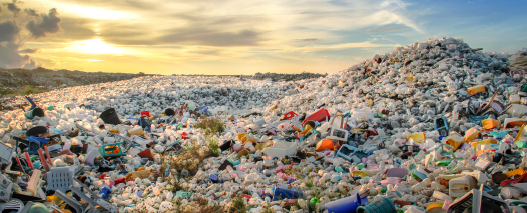
Plastics are everywhere. They are in our phones, clothes, bottles, and cars. Yet having improved our lives considerably, they now threaten our environment and our health. The associated carbon emissions and persistence of plastics challenge the fragile balance of many ecosystems.
Below is a list of quick facts about plastics’ impact on our environment and health, and some suggestions for how individuals can help address the problem.
- Oil, gas, and coal are the fossil-fuel building blocks of plastics.
- 12.5 to 13.5 million metric tons of carbon dioxide equivalent are emitted per year while extracting and transporting fossil fuels for plastics in the United States.
- Emissions from manufacturing a common building block for plastics were 184.3 to 213 million metric tons of carbon dioxide equivalent, which is about as much as 45 million passenger vehicles emit during one year
- 40% of plastics are used as packaging
- Waste incineration has the largest climate impact of processing waste from packaging, over landfill and recycling
- 2% of plastics are recycled into products with the same function; another 8% are “downcycled” to something of lower quality; the rest is landfilled, leaked into the environment, or incinerated
- Plastics can break down into smaller pieces called microplastics, which scatter across the globe even to the depths of the ocean, and can cause serious harm to living beings
Addressing plastic’s harm to the climate requires comprehensive reduction: making, using, and throwing away less plastic. A few suggestions:
- Avoid plastic storage containers and products packaged in plastic in favor of glass or metal instead
- Avoid single-use plastics such as drinking straws
- If you go shopping, remember to take a cloth bag
- Recycle chewing gum… it’s also made of plastic! Or use natural and organic chewing gum
- Buy more bulk food and fewer packaged products
- Avoid using cosmetics that use micro-plastics
- Reuse and recycle properly
Sources used: Iberdrola, “How to Reduce Plastic Use”; Center for International Environmental Law, “The Hidden Costs of a Plastic Planet: Climate”; Yale Climate Connections, “How Plastics Contribute to Climate Change”
Issue #18 – May 13, 2022
Understanding Different Types of Electric Automobiles
There are basically three different kinds of electric vehicles: hybrid electric vehicles, plug-in hybrid electric vehicles and battery electric vehicles. All three varieties of electric vehicles use electricity for propulsion, but there are differences in how they operate and their respective powertrains and electric range. Below we will be reviewing the different benefits of electric vehicles and how each compare to one another.
Hybrid Electric Vehicles (HEVs)
Hybrid electric vehicles are typically referred to as “hybrids,” and although the technology has been around for decades, the cars didn’t really have material market penetration until 1997 when Toyota introduced the Prius.
Hybrid electric vehicles combine a conventional internal combustion engine with an electric propulsion system. The internal combustion engine does most of the work, while the electric motor assists the engine, with its main purpose being to increase the fuel economy.
Hybrids do not have the ability to plug in and recharge from the grid, so they use their internal combustion engines and regenerative braking systems to recharge their propulsion vehicle batteries. Most hybrids do not have the ability to propel the car on battery power alone, and must have the combustion engine running whenever the vehicle is moving. However, there are a few hybrids that can propel the vehicle for a few feet at low speeds, before the combustion engine needs to turn on and assist.
Hybrid electric vehicles have better fuel economy and a lower total cost of ownership when compared to similar conventional cars, however they usually also cost more to purchase initially.
Plug-in Hybrid Electric Vehicles (PHEVs)
The biggest difference between a regular hybrid vehicle and a plug-in hybrid electric vehicle is that the plug-ins have larger batteries and can be plugged in to charge the batteries. They also typically have larger electric motors, because PHEVs are responsible for more work.
Plug-in hybrids can be an excellent choice for consumers who need or want additional range. For those that need to drive very long distances on a frequent basis, a plug-in hybrid offers the flexibility of being able to quickly fill up with gasoline where charging stations may not be available. Plug-in hybrids allow their owners to drive entirely on electricity on the days when they don’t exceed the vehicle’s all-electric range, yet have the combustion engine there when they need it.
While owners will want to keep their plug-in hybrids charged as often as possible to enjoy the savings that driving on electricity provides, they aren’t required to charge the battery in order to use the vehicle. Plug-in hybrids will act like a conventional hybrid electric vehicle if they aren’t charged up from a wall outlet. Therefore, if for some reason the owner forgets to plug the vehicle in one day or drives to a destination that doesn’t have access to an electricity supply, it’s not an issue. Generally, fuel costs are higher when using the gas-powered combustion engine versus electric power.
Battery Electric Vehicles (BEVs)

Battery electric vehicles, or BEVs, are often just called electric vehicles. Unlike HEVs and PHEVs, BEVs are powered entirely by batteries, with a full-electric drivetrain.
In fact, that’s one of the advantages of battery electric vehicles, their simplicity. There are so few moving parts in a battery electric vehicle that very little maintenance is required. There’s no oil changes or tune-ups needed, and the savings from not having these maintenance expenses can add up to significant savings over the lifetime of the vehicle.
Since battery electric vehicles rely solely on the amount of stored electricity in their batteries, it’s even more important to be able to recharge them quickly, than it is for plug-in hybrid models. Therefore it’s important to choose a home charging solution that can fully recharge your BEV as quickly as possible, so you can enjoy the vehicle to its fullest.
Most battery electric vehicles come standard with a 120 volt level 1 charger, which can take very long to recharge the vehicle. That’s because battery electric vehicles have much larger batteries than HEVs or PHEVs do.
Issue #17 – April 29, 2022
Spring is here – Let’s compost!
In Rockport, there are currently 191 households with curbside pick up who are composting. Each week, about .8 of a ton is composted. Since Black Earth Compost began offering these services, 125.3 tons of food waste has been composted. In addition, four businesses are composting: Brackets/Brothers Brew, Mayflour Confectionary, Whistlestop Grocer, and Lattof Farmstand. Curbside pick-up through Black Earth includes not only food waste but items such as compostable tableware, egg cartons, paper towel tubes, pizza boxes, pet food, newspapers and much more. It’s fun to do!
Compost is created by combining organic waste such as leftover food, yard waste and manures in the right ratios to increase the breakdown of organic materials. Composting has many benefits including reducing the volume of waste that goes to a landfill in our town and creating nutrient rich materials to enrich soil.
Black Earth is the only business we know that offers a curbside pick up in Rockport. To sign up, go to: Black Earth Compost.

Issue #16 – April 15, 2022
Attention YRE Families:
FOR EARTH DAY LET’S GET GARDENING!

You can learn all about sustainability, composting, and gardening with this FUN book available at the Rockport Library. It’s filled with great projects, color pictures, and step-by-step instructions.
AND if you’d like to create your own pizza garden (who wouldn’t?) just email Leslie Heffron at: leslie@leslieheffron.com. She’ll bring tomato, peppers, basil, and oregano seedlings to your doorstep!
Issue #15 – April 1, 2022
State of the Coast
Are you wondering about the near future of our coastline? Should we be concerned or is it a case of “misinformation”? Here’s a chance to look at what the Trustees of Reservations have learned through in-depth research, presented by Cynthia Dittbrenner, a recent addition to the staff. Through the Trustees’ work, projections for 2030, 2050, and 2070 were compiled and are presented and explained in this presentation.
Thanks to the Rockport Garden Club for sharing Cynthia’s presentation with us. And if you can watch it before attending the Town Meeting on Saturday, it may aid in your vote on the Net Zero resolution!
Future Climate-Driven Risks and
Their Solutions on the North Shore
Issue #14 – March 18, 2022
“I think that I shall never see, a poem as lovely as a tree…A tree that may in Summer wear, a nest of Robins in her hair… poems are made by fools like me; but only God [Nature] can make a tree.” Joyce Kilmer
Your Climate Action Group is hoping to arrange to accept the gift of an American Elm (our state tree) given to our congregation by Rockport’s own Nathan Ives. If it turns out we don’t have the space for an elm, perhaps we will plant another tree.
Project Elm, founded by Nathan, is supported by a substantial grant from Awesome Rockport founder Sal Zerilli. Project Elm is the blossoming of Nathan Ives’s wish to recreate “the cathedral of elms” that once graced his boyhood address on Norwood Avenue.
As a result of the grant, Nathan still has 40 (of the original 100) disease-resistant elm saplings available without cost to Rockport residents. The only stipulation is that the tree should be planted on a street facing side of the property. And he and his helpers will come plant it for you!!
Once Nathan has confirmed a planting spot at UUSR that can support the growth of an elm that may grow to 80′, we are planning for a dedication ceremony when we can thank Nathan Ives for his gift to us, our planet, and to Rockport.
We will also honor our UU principles by dedicating the planting to reversing Climate Change, and with special remembrance of the people of Ukraine’s fight for democracy.
Please contact Nathan Ives to reserve your tree at (978)290-8622 as soon as possible. Happy Spring and Happy Planting!
Issue #13 – March 4, 2022
Rising Seas and the Impact on our Coast
In the last decade, sea levels have risen 1.5 inches, and 6 inches in the last 100 years. By 2050, with present human behavior and trends, sea level is expected to rise 19 inches.
Rising sea levels can be caused by many things, including the collapse of glaciers. In Antarctica, the Thwaites Glacier (aka the “Doomsday Glacier”), and specifically the connected Thwaites Ice Shelf that braces the eastern side of the glacier, is predicted to collapse and “…shatter like a car windshield within five years” and accelerate the melting of the rest of the glacier.

Glaciers are important because they help reflect the sun’s rays back to space, helping to cool the earth. The glacier’s collapse would likely raise sea levels by up to two feet and expose many other glaciers to faster melting.
What does this mean for us?
Among other things, more coastal flooding (exacerbated by more powerful storms), means more:
- Property damage
- Coastal erosion, including damaged infrastructure like roads and bridges
- Economic impacts
- Increased insurance rates
To help you visualize how sea level rise (and storm surges from hurricanes) would impact Rockport and the nearby coast, check out this video from the Cape Ann Climate Coalition (CACC) about the Sea Level Rise Mural on the Old Paint Factory Building in Gloucester Harbor.
Also, explore this sea rise/storm surge/flood zone Story Map from the MA Office of Coastal Zone Management. Zooming in will explicitly show the coastal locations at highest risk. How would it affect Rockport if Bearskin Neck was under water?
This all makes the need for a comprehensive resiliency plan for Rockport to actively mitigate impacts on our town all the more important. Your Climate Action Group is working with CACC to help make that happen. Come help!
Issue #12 – February 18, 2022
EXTRA! EXTRA! READ ALL ABOUT IT!
To all the emerging climate activists in our church:
Two wonderful children’s books are available for you and your parents to learn more about saving our planet! Old Enough to Save the Planet showcases children from around the world who have started wonderful projects to protect our environment! Maybe their work will inspire you to either start a project right here in Rockport or even join forces with one of the children in the book!
The Story of Climate Change is a story that starts a billion years ago and continues right up until today. Find out how burning fossil fuels and global warming has harmed plants, animals, and people. You’ll learn how scientists are working hard to stop the damage. You’ll even learn how you might be able to help. This book is a great read for both you and your parents! Get cozy together and have fun reading!

Both books are available through the Rockport Library system.
Issue #11 – February 4, 2022
“The earth brought forth vegetation…trees of every kind bearing fruit with the seed in it. And …it was good.” Genesis 1:12
What can you do to reduce your use of energy for heating and cooling? Plant a tree on your property to reduce your home heating/cooling energy use plus contribute to the sequestration of carbon.
According to the FDA, “the value of urban trees continues to grow as they reduce energy used for heating and cooling by $5.4 billion dollars yearly while producing 67 million tons of oxygen. Urban trees are critical to overall environmental quality and human health.”
Also vitally important is the protection of ‘old growth forests’ which sequester huge amounts of carbon – substantially more than younger forests. Forest Ecologist Bob Leverett of Massachusetts has contributed greatly to the discovery and protection of ancestral forested areas such as Ice Glen trailhead in Stockbridge, MA. These precious areas are defined as 150 year old multispecies systems of old growth forest untouched by commercial interests. *For more information about Old Growth Forests please see wonderful article on this topic in Smithsonian Magazine’s current Jan/Feb 2022 issue and https://www.oldgrowthforest.net/massachusetts, highlighting 4 Massachusetts counties. Of special interest is The Mohawk Trail Forest near North Adams comprising many 300 to 500 year old trees.
Perhaps the congregation could set a specific goal for newly planted trees by Rockport residents in celebration of Earth Day, April 22! Photos of the UUSR’s members helping neighbors to plant trees would highlight the good works of UU’s possibly encouraging new membership, especially by young people. Perhaps we could encourage the Town of Rockport to apply for a Tree City USA designation through the Arbor Day Foundation (arborday.org).
Your Climate Action Group invites your comments and suggestions!
Issue #10 – January 21, 2022
Woodwell Climate Research Center ( https://www.woodwellclimate.org) is a leading source of Climate Science that drives the urgent action needed to solve the Climate Crisis.
Woodwell Climate Research Center wants everyone to understand how climate change is affecting the planet and take action to safeguard the future of life on Earth. As we experience the effects of climate change in real-time, around the globe, they are more dedicated than ever to advancing scientific discovery and seeking science-based solutions for the world’s environmental challenges—ensuring that policy and decision-making at every level is informed by world-class climate research.
Click on the Learn More link below to find out about the major Climate Change moments of 2021.
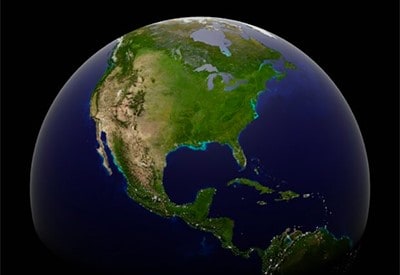
This year in climate, 2021
As another year passes with mounting emissions, we take stock of the big moments for climate change in 2021, from extreme weather events to steps forward on policy.
Issue #9 – January 7, 2022
We Are Not Powerless
It is easy to feel powerless when we consider what it will take to reduce further damage to life on the planet caused by the continued use of fossil fuels and the creation of nearly indestructible petroleum-based products. What can one person or one family or even a whole bunch of us possibly do in the face of massive corporate power and money, and political foot dragging?
Of course, each of us must continue to reduce, recycle, and reuse. But that, while essential, is not enough. We know that.
A recent article in the New York Times, The Climate Crisis Is Raging But We Are Not Powerless reminds us that one way we can exercise power in support of climate action is through “supporting the environmental nonprofits that turn donations into collective action.”
Conservation, environmental, and climate action nonprofits use our donations to fund collective actions in support of legal, political, social justice, and climate education work.
The point, simply, is that we must raise the economic cost of continuing to emit greenhouse gases and the political cost of regulatory inaction.
Here are links to some climate action nonprofits to which a donation can multiply our power:
Massachusetts Climate Action Network (MCAN), Mass Audubon, Massachusetts Association of Conservation Commissions, Environmental League of Massachusetts, The Natural Resources Defense Council (NRDC) Environmental Justice Movement, Woodwell Climate Research Center, 350.org, 350 Mass, and CREDO Mobile.
If you have environmental nonprofits for us to add to the list, please send them to Chris Doyle in the Climate Action Group.
The Cape Ann Climate Coalition is initiating a sign-on letter blitz to let our legislators know about bills we think must move forward. One of those bills is so-called 100% Clean Act,
An Act to Transition MA to Clean Electricity, Heating, Transportation
This bill transitions the 3 main greenhouse gas (GHG) producing sectors (electricity generation, heating, and transportation) to 100% Clean Energy – electricity by 2035, heat and transportation by 2045. One million homes and 300 million sq ft of commercial space must be retrofitted to clean heating by 2030. A trust fund will be created to offset costs associated with switching residential customers to new technologies. Read more by clicking this link.
Issue #8 – December 26, 2021
Happy holidays to all.
May we take time to witness the beauty all around us during this holiday season including the photo above of Plum Cove.
Please enjoy Peter Van Demark’s website: https://artistsforthegreatmarsh.wordpress.com for local activities filled with art and beauty.
Let’s celebrate a new year!
Issue #7 – December 12, 2021
GREENING YOUR HOLIDAYS!
As we approach the end of December with decorations, celebrations, and gift-giving, here are some ideas for lowering the impact of all this on planet Earth starting with tips for Greening Your Holidays (from a 2016 EPA Blog post via Sharon Kishida of Rockport’s Conservation Commission and the Cape Ann Climate Coalition). If the above link doesn’t work – please try this one.
These last few weeks of the year usually see a 25% increase in amounts of trash. Here’s why it is so important to be aware and proactive in diminishing our trash output! Thanks again to Sharon Kishida for sharing this 2020 slide show of Waste Reduction and Why It Matters.
Happy Holidays to all from the UUSR Climate Action Group!
Issue #6 – November 21, 2021
How Climate Change Affects Rockport’s Drinking Water
Living in Rockport, we are surrounded by water. We are totally dependent upon water to survive. But none of the water we use for drinking, washing, cooking, flushing, or watering our gardens, comes from the ocean around us. Every drop of water we use comes from the water in our quarries (Cape Pond, Carlson’s Quarry, and Flat Ledge) and from a four-hundred-foot-deep bedrock well in the Mill Brook Well Field. The water in the quarries and the aquifer comes only from rain or snow.
Climate change, resulting from global warming, has serious and lasting effects on our water supply. It can cause long periods of drought, eroding our supply and increasing the risk of fires. It may cause unusually strong storms, flooding, soil erosion, and potential contamination of our water supply. Already, the sea level around us has been rising, causing erosion and the undermining of oceanfront properties, damaging homes, buildings, infrastructure, and increasing the threat of seawater infiltration of our public and private wells.
Rockport has a total of 195 million gallons in our reservoirs and we use 210 to 270 million gallons per year. Massachusetts’ residential water use is 65 gallons per capita per day (gpcd). By comparison, in Rockport, we use about 53 gpcd. We are doing well but as global warming increases, as it is already doing, we will need to do much better.
What can we all do to save our water supply?
We can reduce our use of water:
- Take shorter, less frequent, showers
- Wash clothing and dishes with only as much water as you need
- Reduce amount of water used in watering lawns and gardens
- Turn off the tap when you don’t need running water.
- Install water-saving faucets and toilets.
- Plant trees to hold water in the soil
- Collect rainwater for non-potable water needs
- Don’t pave your property, to reduce runoff and flooding
- Reduce meat consumption; It takes 600-1800 gallons of water to make one pound of beef, chicken, or pork
- Check your septic system and don’t pour oil or toxic materials into your toilet or sink or into our sewers
- Protect our dunes and repair sea walls
- Help to develop a coordinated plan to move property and people away from the rising sea
Sources:
Town of Rockport Drinking Water Consumer Confidence Report, 2019. Rockportma.gov
National Geographic. How Climate Change Impacts Water Access. Nationalgeographic.org
Protecting Rockport’s Mill Brook Watershed. Rockportma.gov
Ten Ways to Save Water at Home. Americanrivers.org
Annual Average Residential Water Use (Municipal) https://datacommon.mapc.org
Issue #5 – November 7, 2021
Facts About Fossil Fuel Sources
The biggest US fossil fuel generators of greenhouse gases by sector are:
- Transportation 29%
- Electricity 25%
- Industry 23%
[All percentages above are from the U.S. Environmental Protection Agency.]
Within transportation, the breakdown is light-duty vehicles (cars) 58%, heavy duty vehicles (trucks) 23%, Aircraft 10%, Rail 2%, Ships & Boats 2%, Other 5%. These numbers demonstrate how much greater cars, trucks, and power generation contribute as greenhouse gas emitters compared to other sources.
Within the electric generation category, the breakdown is natural gas 40%, coal 19%, nuclear 20%, and renewable sources 20% (wind 8.4%, hydro 7.3%, solar 2.3%, biomass 1.4%, and geothermal 0.4%). As you can see, renewable sources are still a small part of the total.
So what can we do?
Transportation:
- As individual consumers, we can make our greatest impact in reducing greenhouse emissions by minimizing use of gasoline powered cars (ride a bike or take a bus or train when it’s possible!). Kudos to those who are already driving hybrid or electric vehicles, but we need to be aware that EVs charged with electric power that is not derived from renewable sources defeats the purpose somewhat.
Electric Power:
- A tremendous effort is underway to increase the percentage for renewable sources, particularly wind and solar, to be the primary sources feeding the electric power grid.
- As individual consumers, we can reduce our use of domestic electric power and convert to renewable sources by
- considering installing solar panels,
- supporting the development of wind power,
- looking closely at our electricity bills to see how your power is being generated—you can choose a specific provider (which is different from a distributor like National Grid or Eversource) that offers renewable sources,
- switching to LED bulbs and Energy Star appliances,
- minimizing use of air conditioners in summer, keeping our homes cooler in the winter, and practicing other domestic efficiencies
To learn more and get more involved: The Cape Ann Climate Coalition has focus groups in Energy Efficiency and Renewable Energy (and four other areas of concentration) that can help you navigate these issues.
Other resources:
https://www.epa.gov/ghgemissions/sources-greenhouse-gas-emissions
https://goclean.masscec.com/
https://www.energystar.gov/
Issue #4 – October 21, 2021
Recycling
Do you wonder why you should be recycling, where the recycled bottles go and how are they reused? Well here is an example of the benefit of proper recycling…
DGrade
Would you like to make manufacturing more sustainable in order to protect planet earth? Would you like to help remove plastic trash from the world’s oceans, especially plastic water bottles? Would you like to wear snappy T-shirts, each one made from pre-used plastic water bottles? All you have to do is visit an internet site named DGrade, based in Dubai……’cause that’s what they do!
They will fish the bottles out of the ocean, send them to Abu Dhabi (just down the road from Dubai), where they are washed and flaked, then sent to China where they are heated and extruded, turned into polyester fiber, then spun into yarn called Greenspun Yarn……..which turns into a T-Shirt back in Dubai. It takes 10 bottles to make one shirt!
And, oh yeah, DGrade also makes other things through this process, like masks, uniforms, even sheet-rock-like material that can be used for construction.
All out of plastic trash retrieved from the world’s oceans. Pretty neat, eh?
Please visit DGrade web site: https://dgrade.com
Issue #3 – October 8, 2021
Topic: Education – Woodwell Climate Research Center
The Climate Action Group is committed to helping educate you with sound Climate Science. One organization that we view as strategic in providing you with this education is Woodwell Climate Research Center (formerly Woods Hole Research Center).
Woodwell Climate Research Center is a leading global source of climate science that drives the urgent action needed to solve the climate crisis. It is an organization of renowned researchers who work with a worldwide network of partners to understand and combat climate change. For 35 years, it has combined hands-on experience and policy impact to identify and support societal-scale solutions that can be put into immediate action.
The White House Office of Science and Technology Policy recently announced that Dr. Philip Duffy, formerly President and Executive Director at Woodwell, was appointed as a Climate Science Advisor. Duffy’s hire underscores his and Woodwell’s expertise in Climate Science.
You can access Woodwell Climate Research Center’s website at:
https://www.woodwellclimate.org.
Issue #2 – September 24, 2021
What is compost and why do it?
Compost is created by combining organic wastes, such as wasted food, yard trimmings, and manures, in the right ratios to accelerate the breakdown of organic materials. The benefits include reducing the amount of landfill including resulting methane gas, providing carbon sequestration (a method of reducing the amount of carbon dioxide in the atmosphere), and enhancing water retention in soil.
ACTION
1. Compost at home by buying or building a composting container.
2. Subscribe with Black Earth Compost which provides weekly pick up at your home in Rockport and Gloucester. Sign up through this link https://tinyurl.com/yg8efopc and you will get $5 off your first invoice ***AND*** UUSR will get a $5 credit for compost. The cost right now is $69.99 for six months. Share one bin with a neighbor like Chris Doyle and Rev. Susan and split the cost in half!
IMPACT
Black Earth sets up a dashboard to your account so you can measure your impact on the environment. With our two-person household for the last 11 months, we had 418 pounds of food waste diverted from the trash! Wow!
Issue #1 – September 10, 2021
What we eat has an impact on climate change!
Earth’s current environmental crisis is largely caused by carbon emissions into the atmosphere. It has reached alarming levels and sadly the USA is by far the leading contributor to this problem with 16.24 tons per capita in 2017.
Trimming the environmental CO2 and methane will take a long-term strategy involving changes in humans’ lifestyles. Our food supply chain is a major contributor of carbon emissions. For starters, let’s consider actions we can take now, starting today with the food we eat. Paul Greenberg, in The Climate Diet (2021) recommends that we:
- ease up on meat and cheese
- eat more plants grown in season and fish
- be a picky plant eater – avoid processed and locally out-of-season
- do not eat products air-freighted into local stores
- frozen foods: easier to ship slowly, equal in nutritional value & often cheaper
As Michael Pollan asserts – “Eat Food-Mostly Plants-Not Too Much”


